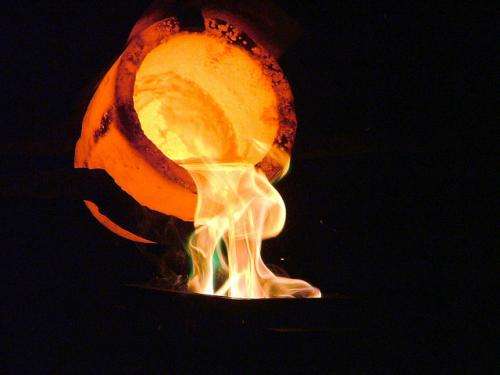Amino acids key to new gold leaching process

Curtin University scientists have developed a gold and copper extraction process using an amino acid–hydrogen peroxide system, which could provide an environmentally friendly and cheaper alternative to conventional methods.
Professor Jacques Eksteen says this process should make many low-grade copper-gold leases throughout WA commercially viable.
Using the amino acid glycine to extract gold, he says, has many advantages over the traditional cyanide and sulphuric acid treatments.
"It's a bulk chemical, it's affordable and it's benign," Prof Eksteen says.
"It forms a stable soluble complex with gold, which is soluble in water."
He says technical-grade glycine is cheaper than cyanide and available in roughly the same quantities.
It can also be used in a similar manner to existing gold refining processes such as carbon-in-leach and carbon-in-pulp.
"In normal gold leaching you would leach with cyanide and then absorb the gold cyanide on to a carbonate leach carbon-in-pulp.
"You do something similar with glycine, it forms a gold-glycinate complex and then absorbs onto carbon and then it lends itself to a similar way of thinking."
He says it also eliminates toxic waste-disposal problems.
"It offers that opportunity to recover and the net cost is fairly low because you can actually reuse it to re-leach if you recover it," he says.
Higher temperature needed to melt gold
He says it can be used to more easily extract gold from poly-metallic ores, such as copper-gold ores, by staging the extractions.
Amino acids dissolve copper at room temperature, but need to be heated to 40-50 degrees to dissolve gold.
Prof Eksteen says in sufficiently warm underground environments the process would be applicable to solution mining, where solvents are injected into an ore body and recovered along with the gold from a central bore.
He also recommends it for future in-situ heap leach extraction projects, a process that is expected to make mining low-grade deposits in remote locations more viable.
Being an alkaline compound, he says it is well suited to extracting gold in alkaline ores such as dolomite, unlike sulphuric acid.
Ores treated in this way require no milling, a major energy consumer.
Prof Eksteen says glycine is manufactured from by-products of the natural gas industry.
"You have other amino acids which are even more selective and more powerful dissolvers of gold compared to glycine, but they are much more expensive, much more exotic," he says.
Many countries produce it, lessening the risk of any political interference with commercial supply.
It will be at least three years before the process could be used on a commercial scale.
Provided by Science Network WA



















